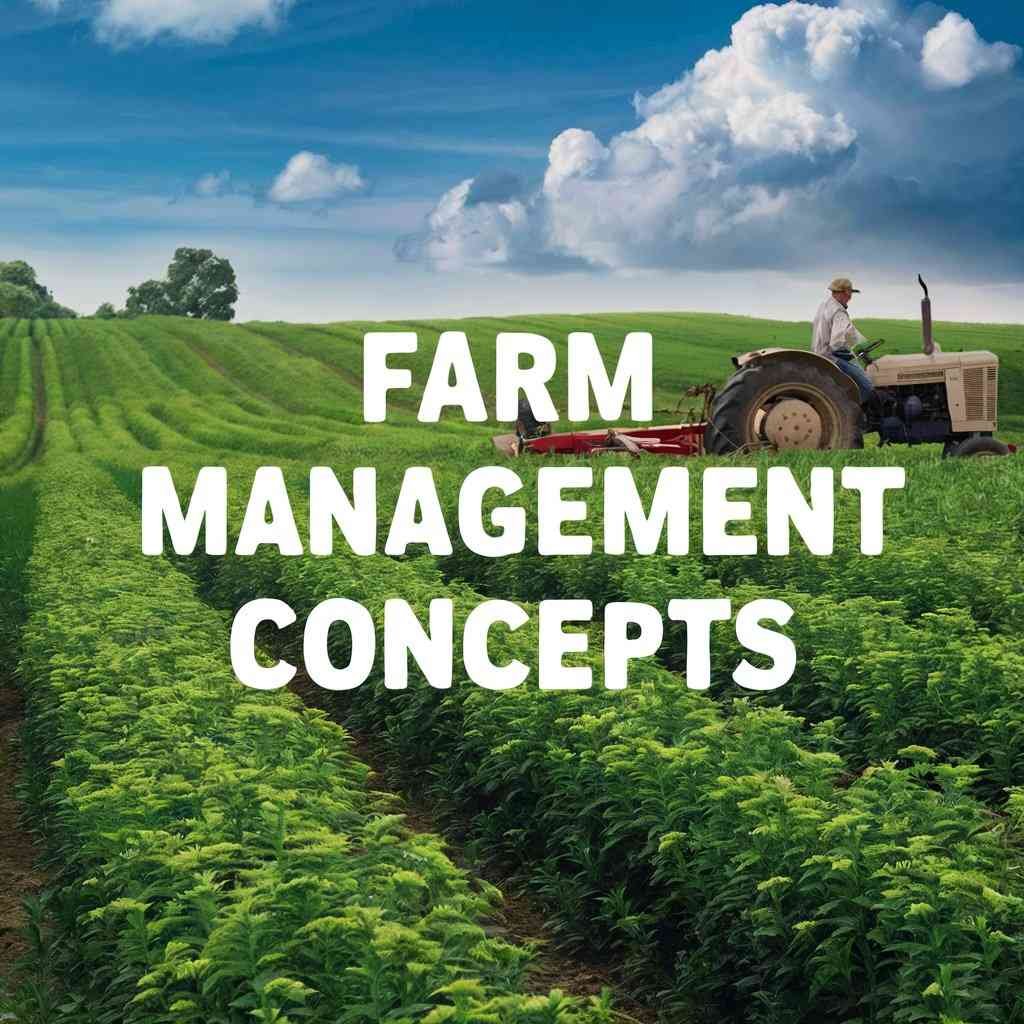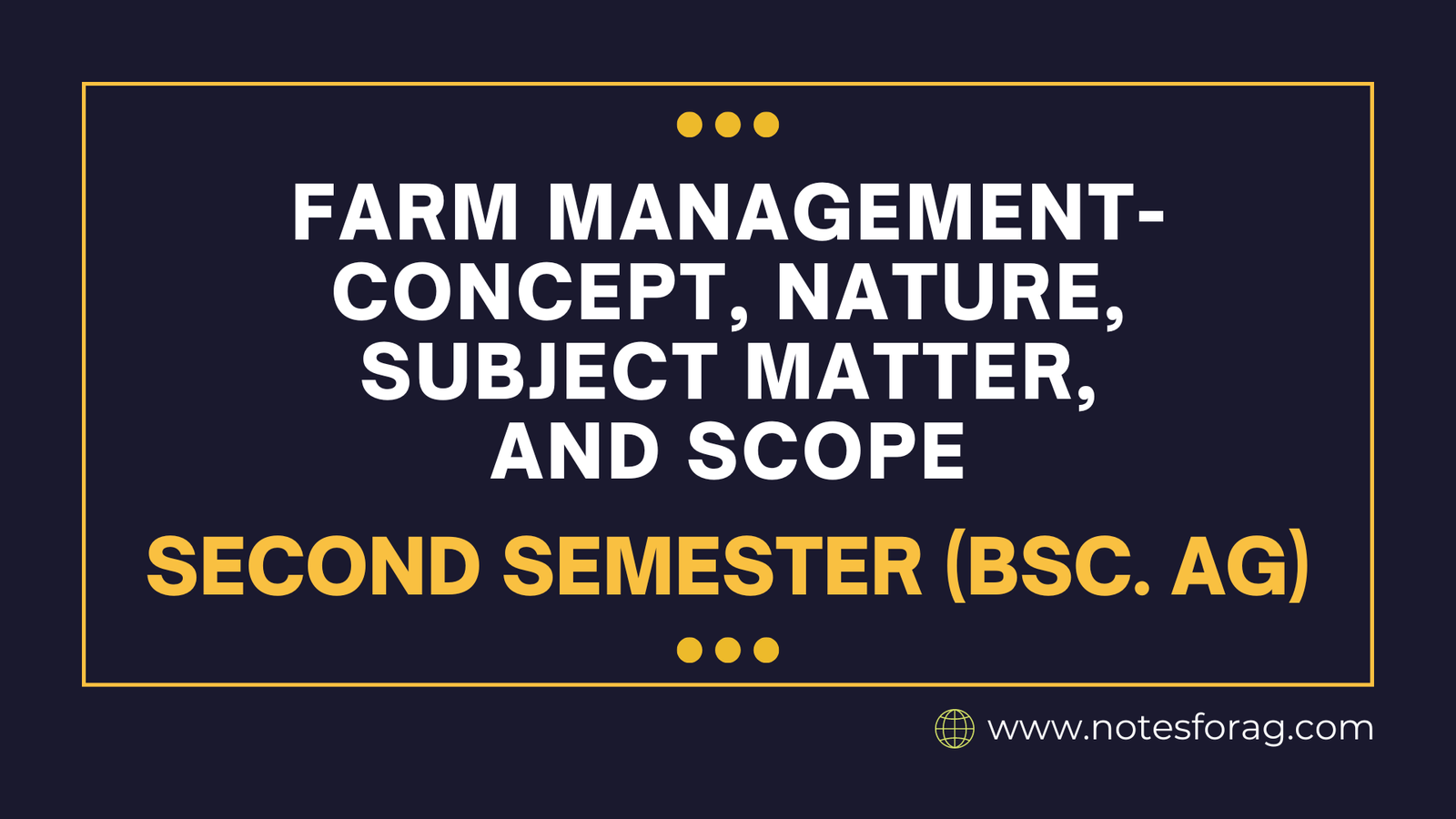In farm management, business concepts are applied to farming activities with the purpose of maximizing the utilization of money, labor, and land to meet objectives like sustainability and profitability. Strategic decision-making and effective resource allocation are crucial in this multidisciplinary field that blends economics, agronomy, and environmental science. Financial management, production methods, risk reduction, marketing strategies, resource allocation, and sustainability practices are all covered.
Table of Contents
Concept

Farm management refers to the process of using business concepts and procedures to run and oversee a farm. In order to meet the objectives of the farm owner or manager, including productivity, sustainability, and profitability, it entails organizing, managing, and planning the use of farm resources.
Nature
Economic, business, agronomic, animal husbandry, and environmental science components are all combined in the multidisciplinary field of farm management. As technology advances and the environment presents new difficulties, it is dynamic and adjusts to changing market conditions. A farm’s operations must be continuously monitored and adjusted, strategic decisions must be made, and resources must be allocated efficiently.
Essentially, the complexity of farm management and the requirement for an all-encompassing strategy define its nature. Farm managers may create resilient farming systems that are sustainable and prosper in the face of changing challenges by incorporating economic, environmental, and social factors.
Subject Matter
A wide number of subjects are included in farm management, all of which are essential to the productive and successful running of agricultural businesses. Farm economics, or the application of economic ideas to farming activities, is one of the main areas of attention. This covers financial planning, budgeting, cost and return analysis, and market conditions assessment to help with decision-making. Comprehending agricultural economics is crucial for optimizing earnings and guaranteeing the sustained sustainability of farming activities.
1. Resource Allocation:
- Optimal use of resources, including capital, labor, and land.
- Figuring out the optimal animal and crop combination.
2. Financial Management:
- Financial planning, accounting, and budgeting.
- Controlling loans, investments, and cash flow.
3. Production Management:
- Methods used in the production of cattle and crops.
- Utilizing creativity and technology in farming operations.
4. Risk Management:
- Recognizing and reducing risks (such as those caused by weather, pests, and market swings).
- Strategies for diversification and insurance.
5. Marketing and Sales:
- Planning and analysis of the market.
- Sales channels and pricing policies.
6. Sustainability:
- Putting into practice methods that guarantee soil fertility and environmental health for the long run.
- Implementing sustainable farming methods.
Scope
Depending on the size of the operation—from modest family farms to massive commercial agricultural businesses—farm management includes a broad range of approaches and procedures. The planning, execution, and supervision of all agricultural operations to guarantee effectiveness, productivity, and sustainability are all included in the broad field of farm management. Farm management must change as the agricultural industry develops to embrace new methods and technologies.

The scope of farm management encompasses various aspects of running a farm, including:
1. Strategic Planning:
- Setting long-term objectives and making strategic decisions.
- Planning for a substantial change, expansion, or diversification.
2. Operational Management:
- Daily operations supervision on farms.
- Controlling workers and carrying out production schedules.
3. Technological Integration:
- Utilizing and overseeing emerging technology (such as automation and precision farming).
- Managing farms with software tools and data analytics.
4. Human Resource Management:
- Hiring, preparing, and supervising agricultural laborers.
- Ensuring labor productivity and resolving labor-related concerns.
5. Environmental Management:
- Adherence to environmental laws.
- Putting into effect methods that improve and safeguard the environment.
6. Policy and Compliance:
- Recognizing and abiding by agricultural laws and rules.
- Keeping track of farm paperwork and records to ensure compliance.
In reaction to these developments and difficulties, farm managers’ roles are changing. A broad range of skills is required of modern farm managers, including proficiency with emerging agricultural technologies, aptitude for data analysis, and a solid grasp of sustainable farming methods. In order to effectively navigate the future of agriculture, farm managers must interact with a variety of stakeholders, including agronomists, technologists, and policymakers. Effective communication and leadership skills are also essential.
In order to maximize farm operations, farm management is a broad field that combines business concepts with agricultural methods. It includes financial management, production methods, marketing, sustainability, risk management, strategic planning, resource allocation, and technological adoption. The objective is to increase agricultural production, profitability, and sustainability while adjusting to shifting circumstances and difficulties.
Frequently Asked Question(FAQ)
What is farm management?
Farm management is the process of integrating business concepts and procedures into agricultural operations in order to maximize the utilization of capital, labor, and land while pursuing objectives like productivity, sustainability, and profitability.
What are some common risks in farm management and how can they be mitigated?
Extreme weather, illnesses and pests, shifting market conditions, and unstable finances are examples of common risks. Diversification, insurance, hardy crop types, integrated pest control, and keeping cash reserves can all be used to mitigate them.
Related Articles

